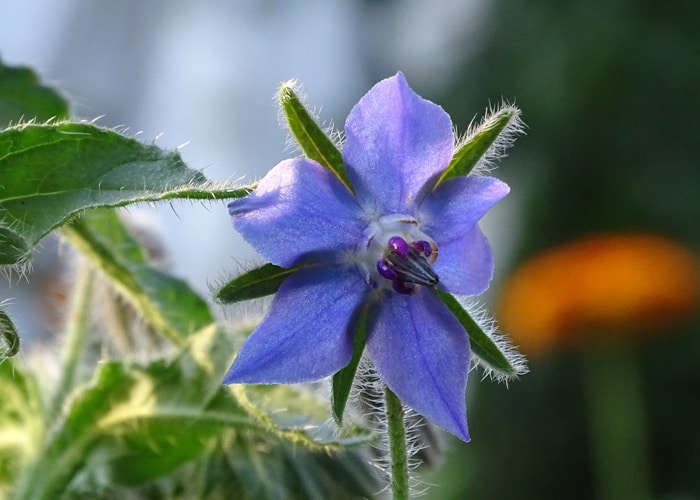Borage oil with many qualities
An oil rich in fatty acids
Borage, also known as borage officinale (Borago officinalis L.) is a plant recognisable by its small blue star-shaped flowers. It belongs to the Boraginaceae family, which is common in Europe. Borage oil is extracted by cold pressing its seeds. Its richness in omega-6 fatty acids: 18 to 25% gamma linolenic acid (GLA) and up to 70% linoleic acid (LA), contribute to the proper functioning of the body(1).
GLA, a polyunsaturated fatty acid, is one of the main constituents of membrane phospholipids, (including mitochondrial membranes), where they enhance membrane integrity and fluidity(2). Linoleic acid plays an essential role in the synthesis of cell membranes. In the body, GLA can be synthesised from linoleic acid. This step remains limiting as the formation of GLA depends on the activity of the enzyme delta-6-desaturase, which can be diminished by many factors including ageing, nutritional deficiency, trans fatty acids, hydrogenated oils, smoking, alcohol…
Studies have been able to demonstrate the effect of borage oil on skin conditions (atopic dermatitis or eczema)(3-4) and rheumatoid arthritis(5). These results were associated with the anti-inflammatory properties of borage oil due to its high GLA content.
This vegetable oil can also be a beauty ally. It is a natural moisturiser and anti-ageing agent, thanks to the essential fatty acids it contains. The oil is used to treat brittle nails and devitalized hair.
The microencapsulated form to protect the oil
Capsularis offers you its organic borage oil powder, with a minimum of 72 mg/g of GLA (gamma linolenic acid).
The micro-encapsulation protects the oil and its active ingredients from oxidation, light and interactions with other components. It also allows the prolonged and controlled release of the active ingredients into the body.
Sources
- Santé Science. « Huile de bourrache : Analyse de ses propriétés et vertus santé ».
- Mayes P., Metabolism of unsaturated fatty acids and eicosanoids, Harper’s biochemistry Appleton & Lange, 24th ed., Stamford, CT, 236-244.
- Steward J.C. et al., Treatment of severe and moderately severe atopic dermatitis with evening primerose oil: a multicenter study, J. Nutr. Med., 1991, 2: 9-15.
- Foster RH, Hardy G, Alany RG. Borage oil in the treatment of atopic dermatisis. Nutrition. 2010 Jul-August ; 26(7-8) :708-18. Review.
- Leventhal L.J. et al., Treatment of rheumatoid arthritis with gamma-linolenic acid, Ann. Intern. Med., 1993, 119: 867-873.


